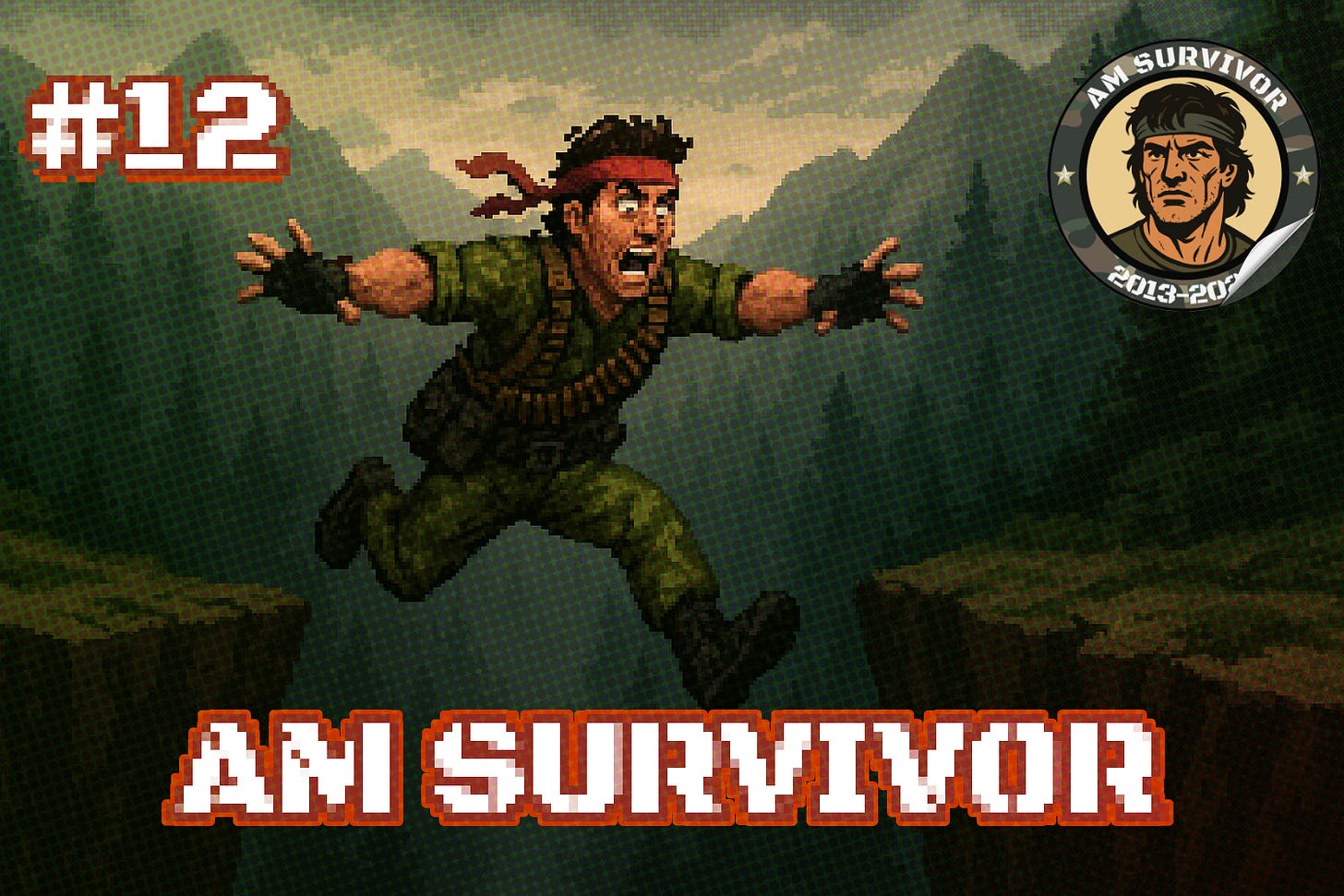The AM gamble
AM Survivor #12
What would you have said two years ago about a company that had the following brands in its portfolio: Desktop Metal, Nexa3D, Sintratec, Ultimaker? That it had a perfectly diversified portfolio?
Of course you would!
In 2023, it was truly a balanced and well-thought-out mix:
metal binder jetting (DM)
high-performance resin printing (NX3D)
desktop resin printing (DM / ETEC)
industrial-grade SLS (NX3D)
desktop / low-cost SLS (Sintratec)
desktop-grade FFF (Ultimaker)
Today only Ultimaker still exists. And even it seems to have left its best days behind. The rest are gone (at least in their former form - since what remained of ETEC and Nexa3D was absorbed by other companies).
Just imagine this - only two years ago you had the crème de la crème of global AM players, and today you’re left with a pile of problems, disappointed customers, and possibly unrecoverable debts from collapsed firms.
Or actually, don’t just imagine it. After all, this is the reality for countless distribution companies!
Let me put it bluntly: selling industrial 3D printers in the AM industry today is a high-risk investment. Practically a gamble.
Bankruptcies, acquisitions, and “resurrections” have become the norm, not the exception
Take an example from this very week. BCN3D - for years a well-recognized brand in the semi-professional and desktop industrial space - filed for bankruptcy in May 2025, and by mid-August 2025 its assets and operations were acquired by a newly created company, Quantum. Which - according to reports - is supposed to ensure continuity of operations and preserve jobs.
This is not a “quiet restructuring”: it’s a textbook case where customers, distributors, and service providers suddenly have to renegotiate contracts with the buyer, or lose access to spare parts and technical support.
Another example: TRUMPF - for years one of the most credible and conservative industrial companies, which had invested heavily in laser-based metal AM - announced the sale of its metal 3D printing business to the private equity fund Lenbach Equity Opportunities (LEO III/DUBAG).
That’s a clear signal: even companies with strong financial and technological backing now view AM as an area worth exiting in order to refocus on their “core business.”
For resellers and integrators, this means one thing: the technology is sold, the development roadmap may shift, post-sales support may be restructured, and strategic guarantees can be reduced.
And these are only the most recent cases. The years 2024–2025 have been a period of intense consolidation: startups and mid-sized manufacturers either collapse or see their assets picked apart by bigger players. Lately, Stratasys has been especially active in this regard, scooping up what was left of Forward AM and Nexa3D.
Interestingly, industry reports and market analyses as early as the beginning of 2024 were already indicating that consolidation would be one of the main trends. But what was supposed to be “a natural market cleanup” now looks more like an avalanche.
For any company selling machines, this boils down to one thing: after one round of portfolio planning, everything can collapse during the very next wave of transactions.
This situation brings a whole range of practical consequences and makes sales inherently risky:
Uncertainty of parts and service availability - after an acquisition or bankruptcy, entire service channels may disappear, and access to original spare parts may become more difficult or expensive.
Risk of inventory devaluation - keeping stock of components for a specific printer line may leave you stuck with “useless” parts once the technology is abandoned or modified by a new owner.
Financial reliability of the new owner - industrial clients invest in stability: if a brand disappears or falls into the hands of a private equity fund seeking only short-term gains, selling service contracts and long-term solutions becomes much harder.
Reputational costs - a distributor selling “the technology of tomorrow” may tomorrow face accusations of poor market judgment if the machines become unserviceable.
Additionally, acquisitions and bankruptcies often trigger “asset sales” - where equipment changes ownership, while rights to software, materials, formulas, and qualification tests get split apart.
For aerospace or medical customers, this is catastrophic - requalification and new certification cost money and take time. In short: planning CAPEX purchases based on a brand name is no longer safe.
So where should one look for “safe” players?
At this point, the most reasonable bet seems to be on Chinese solutions - BLT (Bright Laser Technologies), Farsoon, HB3D, or Kings 3D. Each of these companies has strong manufacturing capacity, access to domestic capital, and the ability to scale production quickly.
For some distributors, the Chinese supply chain looks more predictable than the Western market plagued by acquisitions.
But even this “safest bet” comes with a big BUT: politics.
Trade in critical technologies, sanctions, export controls, rising trade tensions, and restrictions on advanced tech transfers (especially in metals and aerospace) make investments in Chinese technologies completely unpredictable.
Today a machine may be available, tomorrow it could land on an export control list, or a defense-sector customer might suddenly be prohibited from using it.
In other words: international politics quickly neutralize the advantage of low cost or fast availability.
For years, AM has thrived on the narrative of a manufacturing revolution: “let’s print everything, let’s replace entire supply chains.” And the industry sold this story to investors, policymakers, and OEMs.
But the reality is different: many technologies remain niche, operating costs are high, material qualifications are expensive, and ROI is often unattainable within the expected timeframe. This collision of expectations with reality generates collapses and harsh selection.
What to do, and what to avoid?
Avoid building your offering solely around “hip” brands. Technological diversification is no longer enough - diversification of supply chains and access to spare parts is key.
Negotiate “continuity of supply” clauses and backup plans in OEM contracts - and when possible, demand service agreements that can be transferred to a third party.
Keep working capital reserved for critical spare parts and qualifications - better to have a few weeks’ worth of buffer inventory than a long and costly downtime.
Look closely at ownership stability: is the company founder-owned, VC-backed, or controlled by an industrial group? Each type of ownership brings a different level of risk when it comes to sales or cuts.
On paper, the best decisions from two years ago now look like investment mistakes. Planning anything in this industry has become extreme.
The AM market today is a casino where everyone loses.







Pawel, I don’t see you mentioning Renishaw or EOS with regard to industrial printing , who both appear to be doing well in many aspects of AM.